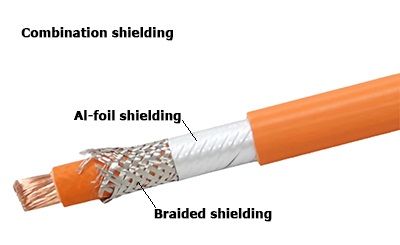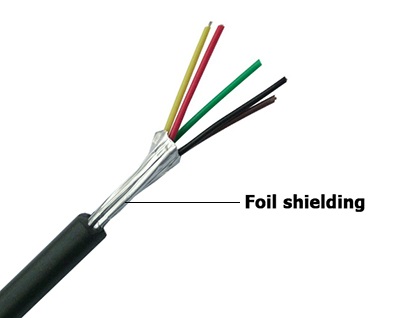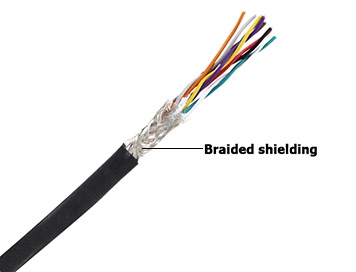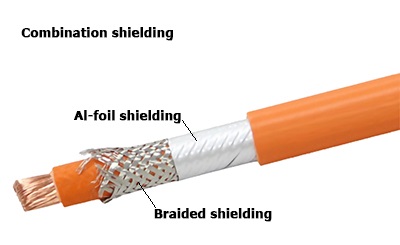[tpe widget="select2/tpw_select2.php"]
Different shielding materials serve different purposes of the cables

There are three common types of shielding used in cables: foil shielding, braided shielding, and combination (foil and braided) shielding.
1. Foil shielding: Foil shielding consists of a thin layer of aluminum or copper foil wrapped around the cable. It provides protection against electromagnetic interference (EMI) by preventing external electromagnetic signals from entering or interfering with the signal transmitted through the cable. Foil shielding is particularly effective at high frequencies.

2. Braided shielding: Braided shielding is made up of a woven mesh of fine metal wires, typically copper or tinned copper. It offers excellent flexibility and provides a higher level of EMI shielding compared to foil shielding. Braided shielding is particularly effective at low frequencies and provides better coverage against low-intensity magnetic fields.

3. Combination (foil and braided) shielding: Combination shielding combines the advantages of both foil and braided shielding. It provides a high level of protection against both EMI and radio frequency interference (RFI) across a wide frequency range.

Overall, these shielding materials help to maintain the integrity and quality of the electrical signal transmitted through the cable by minimizing interference from external electromagnetic sources. They ensure that the desired signal remains strong and clear, thus improving the overall performance and reliability of the cable system.
